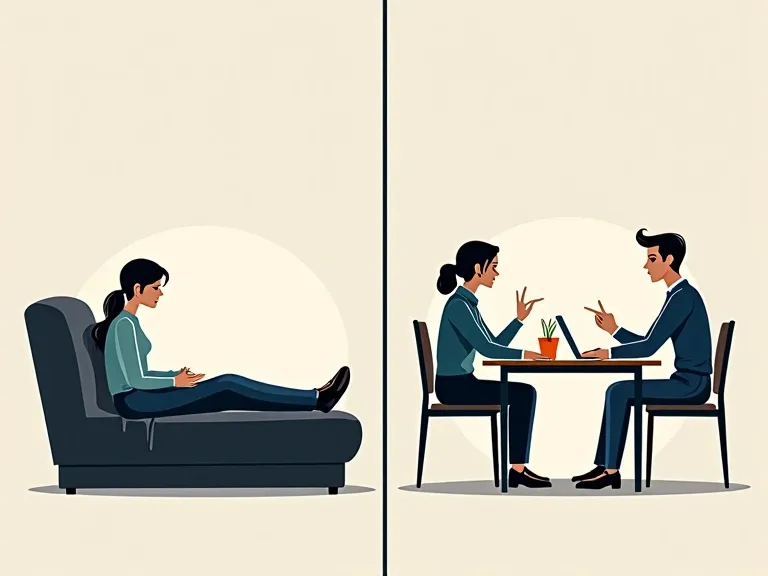In a fast-paced world full of constant demands and endless stimuli, it is increasingly difficult to find a moment of true respite and authentic peace. Tired of the daily grind, stressed by constant notifications and overwhelmed by the to-do list, we instinctively seek the answer to a fundamental question: how to find joy in the little things and create a space that will be our cozy refuge from the chaos of the outside world? The Danish philosophy of hygge seems to offer a complete and holistic solution to this modern dilemma.
In this article, you will discover the essence of hygge – a concept that has made the Danes one of the happiest nations in the world. You will learn practical ways to introduce coziness and comfort into your everyday life, learn to consciously celebrate small pleasures and create an atmosphere of warmth in your surroundings. Whether you dream of cozy candlelit evenings or are looking for simple rituals that will add more meaning to your days – hygge offers a universal language of happiness that everyone can easily learn and apply to their lives.
What is the philosophy of hygge?
Hygge is a Danish philosophy that goes beyond a simple definition – encourages us to live consciously and celebrate even the smallest everyday moments. The Danes don’t just talk about hygge, they actively practice it, creating cozy spaces where they surround themselves with warm candlelight, soft textiles, and spend time with loved ones. A key element of hygge is mindfulness – instead of rushing through life, we stop and appreciate the present moment.
The main advantage of practicing hygge is its positive effect on mental health. When we regularly relax in a pleasant atmosphere and focus on simple pleasures, we significantly reduce stress levels. Studies confirm that Danes who live according to the philosophy of hygge on a daily basis often enjoy higher levels of happiness despite the harsh climate and long, dark winters.
The challenge with the philosophy of hygge, however, may be its potential idealization. Some critics point out that in Western societies, hygge sometimes turns into another consumer trend – instead of practicing authentic simplicity, people buy designer candles and expensive textiles to create an “Instagrammable” version of hygge. This philosophy loses its original meaning, which is to enjoy what we already have, not to acquire new things.
Key elements of hygge
In our everyday lives, full of rush and technology, we often forget about the simplicity and warmth that hygge brings. Hygge is more than a trend – is the way to find happiness in small things. We, in search of balance, can reach for this Danish philosophy, which teaches us how to celebrate ordinary moments. Each of us deserves a space where we feel safe and comfortable.
We find hygge in a warm blanket on a rainy evening. We find hygge in the aroma of freshly brewed coffee and homemade cake. We find hygge in long conversations by candlelight. It is in these inconspicuous moments that the essence of a happy life lies. Our home becomes a shelter where everyday life turns into a celebration, and an ordinary meeting with friends takes on a special meaning. Hygge reminds us that true wealth is not hidden in material goods, but in the ability to see beauty in simplicity.
Hygge is not about what you have, but how you feel. It is the art of creating closeness, both with yourself and with others.
In our journey towards a better life, practicing hygge can be the key to finding inner peace. Instead of chasing new experiences, let's stop for a moment. Instead of worrying about tomorrow, let's appreciate today. Instead of complicating, let's simplify. Our collective return to basic values can be the best medicine for modern ills.
Creating a cozy space
Many of us wrongly assume that creating a cozy space requires large financial outlays and radical changes in decor. We buy expensive furniture and decorations, believing that they will give our interior a unique character. However, the real coziness is not about accumulating items, but about creating an atmosphere of warmth and security using simple, thoughtful elements.
Instead of focusing on expensive renovations, start small. Soft textiles like plush blankets and pillows instantly add a cozy touch to a room. Warm, diffused lighting can dramatically change the feel of a space—replace harsh ceiling lights with string lights, garlands, or candles. Remember that the most important element of hygge is the intention with which you create your space. Introduce natural materials – wood, wool, cotton. Limit electronics in rooms designated for relaxation. Add personal touches that evoke positive emotions – photos of loved ones, souvenirs from travel or items of sentimental value.
A truly cozy space engages all the senses. Take care of pleasant scents - candles with natural aromas, fresh flowers or dried herbs. Think about the textures that you encounter by touch. Introduce elements that please the eye and bring a smile. Hygge is a philosophy of appreciating simple pleasures, which is reflected in the space you create around you.
Hygge in interpersonal relationships
Key points:
- Hygge in relationships is about building authentic bonds based on presence and mindfulness, without digital distractions.
- Creating a safe space where everyone can be themselves is the foundation of hygge in interpersonal relationships.
- Regular, informal meetings in a small group are the essence of the Danish approach to nurturing relationships.
Hygge in interpersonal relationships is the art of building deep, authentic bonds that warm our hearts even on the coldest days. The Danes, masters of this concept, know that true happiness does not lie in material goods, but in quality time spent with loved onesIn the digital age, where contact is often limited to exchanging messages, hygge reminds us of the value of physical presence and mindfulness towards another person.
One might ask: “In a busy world, do we still have time for such slow relationship building?” The answer is that this is why we need hygge more than ever. It is a conscious opposition to the culture of rush and superficiality. The Danish approach to relationships involves creating a space where everyone can be fully themselves – without judgment, without pressure, without constantly checking notifications on your phone.
Hygge in interpersonal relations is also an art creating a safe haven for those we love. These are small meetings in the privacy of our homes, where the quality of the conversations counts, not their quantity or volume. The Danes prefer regular, intimate meetings in a group of 3-4 people, which encourage deeper conversations and authentic bonds. In such an environment, it is easier to share both joys and worries.
“But aren’t such meetings boring?” – someone accustomed to intense experiences might wonder. Quite the opposite! Hygge in relationships is a celebration of simple pleasures in a shared group: playing board games by candlelight, cooking together, singing, long conversations over tea. It is during such moments that memories are created that we cherish for years.
“Hygge isn’t just about candles and blankets. It’s about the way we look each other in the eye, listen attentively, and allow ourselves to be authentic in the presence of others.”
Simple pleasures as the foundation of hygge
Warm spread across the room as the first sip of hot chocolate touched her lips. In that simple, everyday moment was the essence of hygge – a philosophy that has consistently seen the Danes top the list of the world’s happiest nations.
Simple pleasures are at the heart of Danish hygge. You don't need fancy gadgets or expensive entertainment to experience deep, authentic joy. A cup of aromatic tea, a favorite book and a soft blanket are enough to create a space where time slows down and the soul finds solace. It is in these inconspicuous moments that we discover the true magic of everyday life.
Hygge teaches us that happiness doesn’t have to be complicated. A walk in an autumn park, baking cookies together or watching snowflakes outside the window – these experiences, although seemingly banal, have the power to fill our lives with genuine satisfaction. The Danes know that the ability to see beauty in small things is an art worth cultivating.
"The greatest happiness is often found in the smallest gestures and simplest everyday rituals."
Practicing hygge by celebrating simple pleasures allows us to break free from the trap of constantly chasing more. Instead of striving for distant goals and unattainable ideals, we learn to appreciate what we already have. A quiet evening with loved ones, laughter during a shared dinner, the smell of freshly brewed coffee in the morning – these moments contain deep joy that strengthens our psychological foundations and builds lasting satisfaction. It is extremely important to be aware that it is the ordinary moments that give life an extraordinary character.
Hygge as a Path to Happiness in Danish Culture
Hygge, an unspoken Danish concept that holds the essence of happiness, is the foundation of the Scandinavian approach to everyday life. It is not only a way of interior design, but above all a philosophy of life., which taught the Danes to find joy in the simplest of things – a warm cup of tea, candlelight or a conversation with loved ones. Moreover, hygge allows you to create a space free from the stress and rush of the modern world, offering instead a safe haven filled with authentic emotions and peace.
However, one might ask: “In this age of constant pursuit of success, isn’t it a waste of time to focus on small pleasures?” In fact, research shows the opposite – it is the ability to celebrate the everyday that is the secret of Danish happiness, despite the harsh climate and long, dark winters. As a result, Danes regularly top the world’s happiness rankings. Hygge teaches us that true wealth does not lie in material goods, but in the ability to experience each moment with full awareness of its value. – in the warm light of candles, among friendly faces, away from notifications and the constant rush.
Hygge – The Danish Art of Discovering Happiness in Everyday Life
Hygge is not just a word, but a way of life that the Danes have mastered to perfection, making their country one of the happiest in the world. Let's recall the most important elements of this philosophy:
- Appreciating every moment and enjoying simple pleasures
- Creating a cozy atmosphere with soft textures and warm lighting
- Cultivating closeness with others and celebrating everyday life together
- Practicing mindfulness and finding peace in the little things
- Enjoying simple pleasures that bring true happiness
Maybe now is the time to introduce more hygge into your life? Take the first step towards Danish happiness today!
Coziness in Your Cottage – The First Step to a Successful Treat
Start your hygge adventure by creating a cozy space in your home. Sometimes, going back to childhood, when we built blanket forts, can be an inspiration to create our adult, cozy nooks.
Closeness and Sweetness – The Source of Joy and Love
Invite your loved ones over for an evening of candlelight conversation and hot chocolate. These shared moments, seemingly ordinary, often become the most precious memories.
Mindfulness and Smallness – The Key to Your Happiness
Slow down. Notice the small details of your day. This non-linear journey through everyday life, where time sometimes moves slower and sometimes it seems to go full circle, allows us to see beauty that we didn’t see before.
Comfort Without Fear – Your Path to Improvement
Remember that hygge is also about giving yourself permission to feel comfortable and indulgent without feeling guilty. Take care of yourself as you would your best friend.
Are you ready for more hygge in your life? Start today – light a candle, wrap yourself in your favorite blanket, and enjoy the moment. Because life is made of moments like these!
Frequently asked questions
What exactly is hygge and how do you pronounce it?
Hygge (pronounced "hyge" or "hue-gah") is a Danish life concept that means a sense of comfort, coziness, and contentment. It is a philosophy of celebrating everyday moments and enjoying simple pleasures. Danes consider hygge to be a key part of their culture, helping them survive the long, dark winters and achieve a high level of happiness.
How to introduce elements of hygge into your home?
Introducing hygge into your home is relatively easy and doesn’t require a lot of investment. Start by providing soft lighting through candles or warm light lamps. Add soft textiles like blankets, pillows and rugs to enhance the feeling of coziness. Get rid of unnecessary clutter and create a space that is conducive to relaxation and quiet conversation.
Can hygge only be practiced in winter?
Although hygge is often associated with winter evenings, it can be practiced all year round. In the summer, hygge can mean picnics in the park, garden gatherings, or long evening walks. In the fall, it can mean picking mushrooms or leaves, and in the spring, celebrating the first rays of sunshine. The essence of hygge is the conscious experience of pleasant moments, regardless of the season.
Why are Danes considered one of the happiest nations in the world?
Danes regularly rank high in the world’s happiest nations, and hygge is one reason why. This philosophy allows them to appreciate simple pleasures, build strong social bonds, and maintain a work-life balance. Additionally, Denmark’s well-developed social welfare system reduces stress related to basic needs, which promotes an overall sense of security and happiness.
Is hygge just a fad or does it have a deeper meaning?
Although hygge has become a fashion trend in recent years, for the Danes it is much more than a passing fad. It is a deeply rooted element of their culture and a way of life that helps them find happiness in everyday life. Hygge is also a response to the increasingly fast pace of life and omnipresent technology – it reminds us of the value of simplicity, mindfulness and authentic interpersonal relationships.







